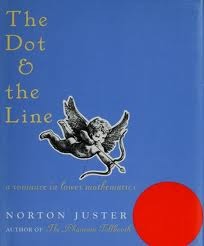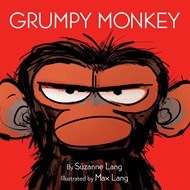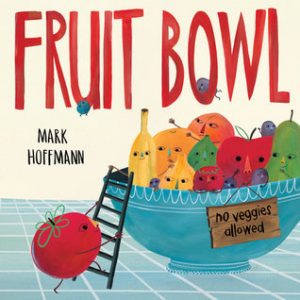 The Dot & the Line: A Romance in Lower Mathematics by Norton Juster is absolutely delightful, featuring a love triangle between a “sensible straight line who was hopelessly in love with a dot”, who was of course hanging out with “a wild and unkempt squiggle”. Accompany your reading with the short animated film on YouTube (and apparently also as a special feature in The Glass Bottom Boat DVD, of which we own 3 copies, so feel free to check that out).
The Dot & the Line: A Romance in Lower Mathematics by Norton Juster is absolutely delightful, featuring a love triangle between a “sensible straight line who was hopelessly in love with a dot”, who was of course hanging out with “a wild and unkempt squiggle”. Accompany your reading with the short animated film on YouTube (and apparently also as a special feature in The Glass Bottom Boat DVD, of which we own 3 copies, so feel free to check that out).
The overall structure of the plot arc is quite predictable, but that’s not where the charm of this wonderful romance lies. Part of it, I’m sure, is just in the fact that it was written in the 60s, so some of the phrasing is a touch quaint reading it now, but I want to say that the charm of it is simply in the fact that this is a mathematical romance. It’s dedicated to Euclid! There are math puns & references everywhere (though some of them smarter than others), and the entire novel(la) is overall a delightful romp. And as some of you know, despite math not being anywhere near my forte, I have a love of it all the same. You don’t really learn anything about shapes or math in any way apart from how to creatively apply lines and shapes, but that’s why it’s a romance in lower mathematics, right?*

